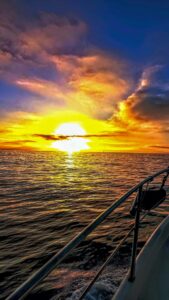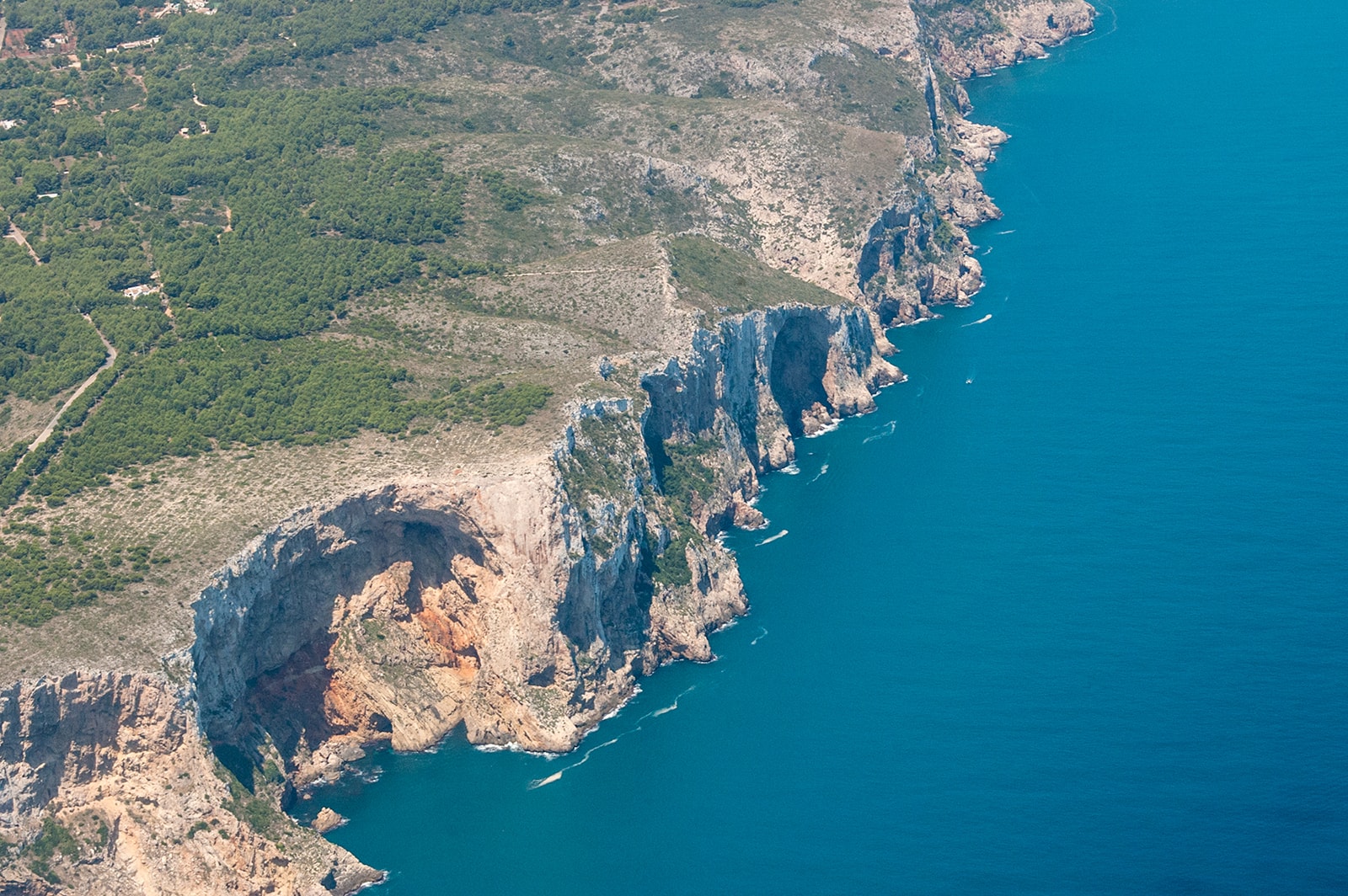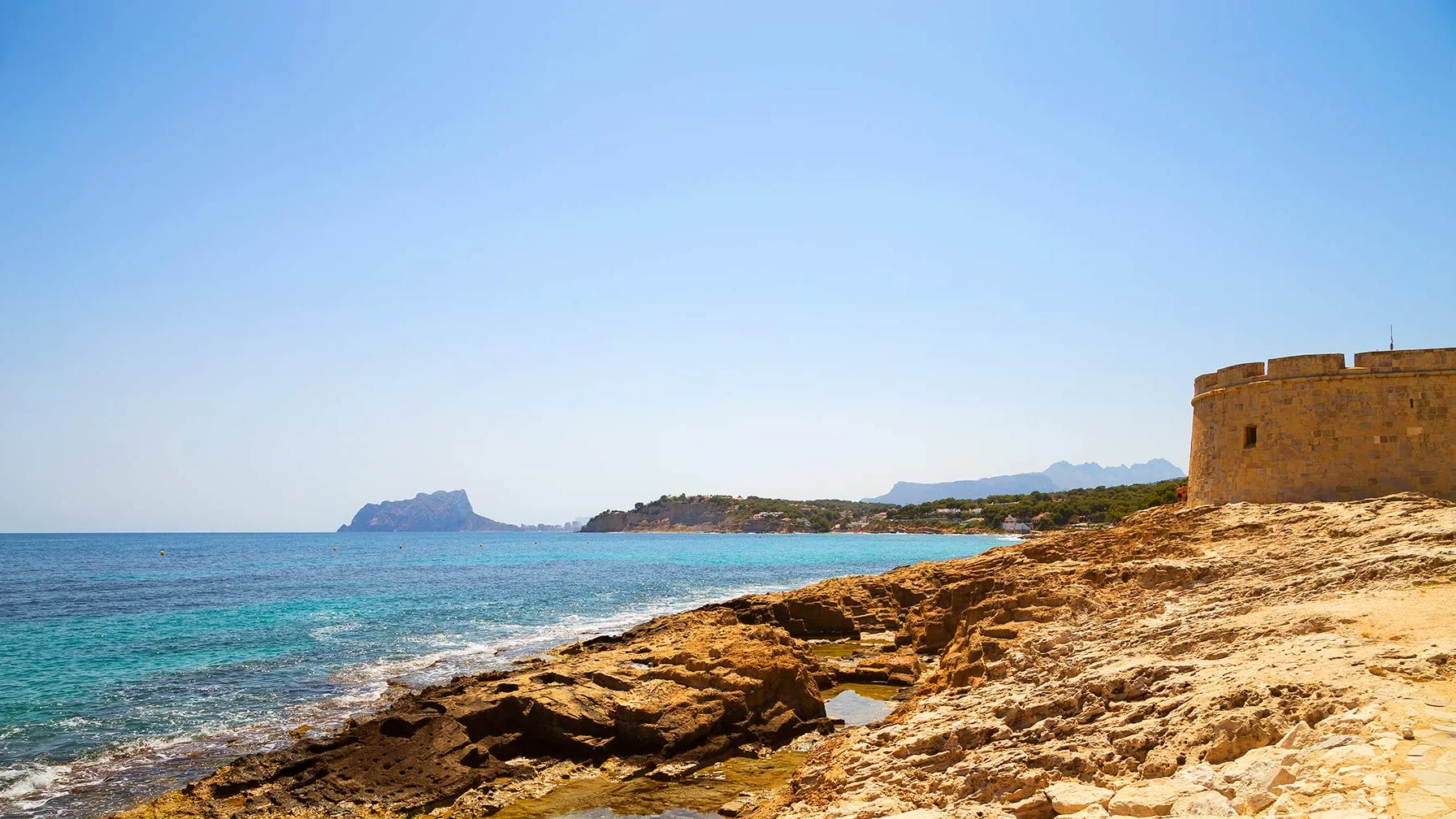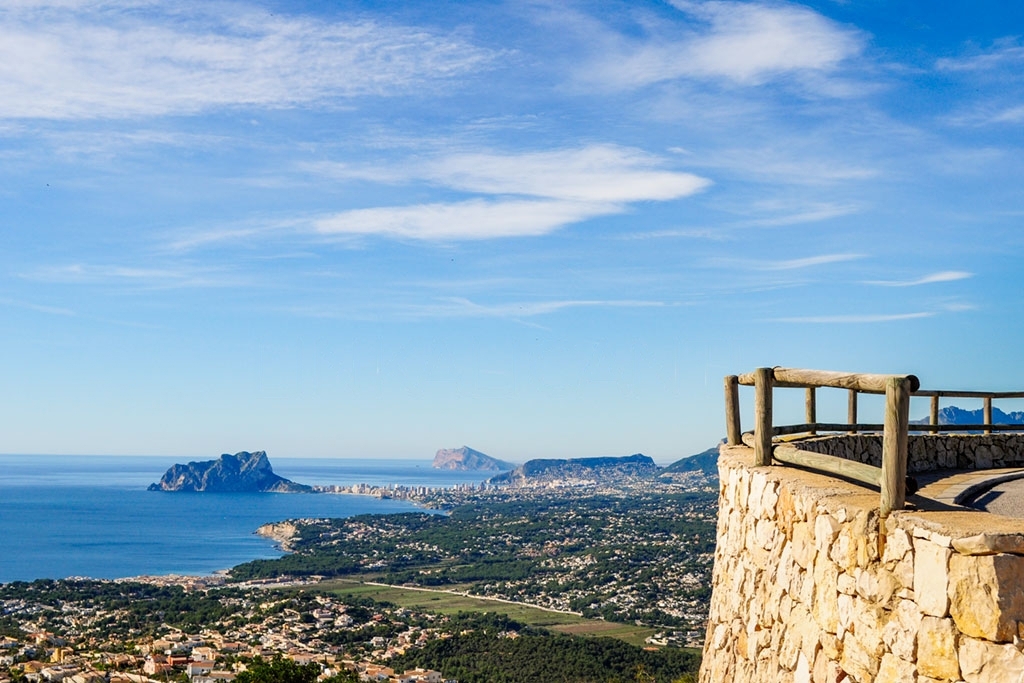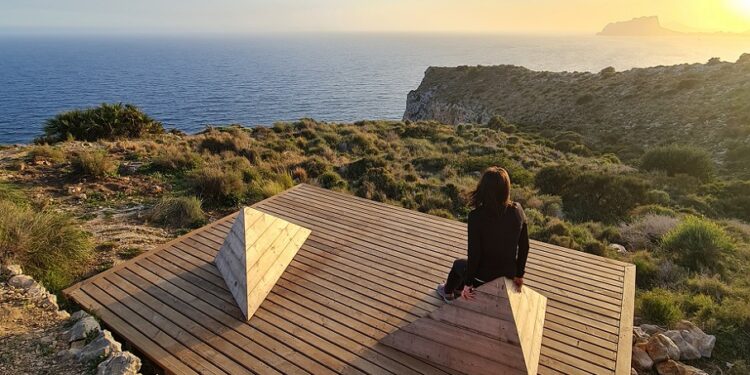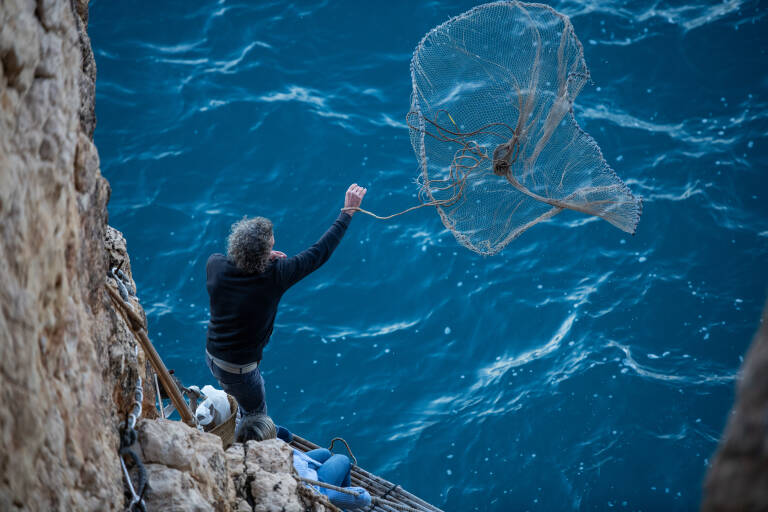“Our Pirate Route” is a journey that will allow you to explore the historical and emblematic sites of the Moraira coast, immersing yourself in the fascinating stories of Barbary pirates and local defenders. On this tour, you will discover fortresses, secret caves, and watchtowers that have witnessed countless raids and battles in the Mediterranean. Get to know the exciting history of this region through its places and discover the hidden treasures of the Moraira coast!
- Moraira Castle: It was a fortress/refuge for the people who lived in the area. It was built to defend against the continuous cruel attacks of the Barbary pirates. Hence the expression “there are no Moors on the coast”.
- Port of Moraira: Base of the pirate expedition.
- Watchtower of Cap d’Or: It was a surveillance point where fire was made to warn the inhabitants of the pirates.
- Cala Llebeig: It was a point where the pirates disembarked sheltered by the cliffs to be able to perpetrate their misdeeds.
- Cala de los Testos: It was a shelter with a draft where you could collect fresh water that the Romans already used. This is where the name “Testos” or amphorae comes from.
- Cueva del Morro de la Blanca: It is a small cave where you can take refuge and prepare your raids.
- Cala Granadella: In the cove of Granadella, due to its depth, it was one of the favorite places to disembark. As a result of this, the fort was built at Cabo de la Granadella.
- Cueva del Lobo Marino: Another of the caves where you can hide from attacks.
- Torre del Descubridor: In front of the Isla del Descubridor is this tower absorbed by a chalet, it is another of the lookout points in this corner.
- Cueva de los Órganos and Cabo de la Nao: It is the largest of the caves we have. Several boats took refuge in this cave and could also collect fresh water. It is the point of reference for the sailors who crossed these coasts when they came from Algeria or the Balearic Islands.
- Cabo Negro: Here we have another watchtower although from the sea it is difficult to appreciate it that warned neighboring Jávea of pirates.
- Cueva del Tabaco: It is a cavity where smugglers hid tobacco and the valuables they transported.
- Portichol watchtower: Where, upon spotting piracy, they announced to the population of Jávea.

Jeireddin Barbarroja:
We begin to arouse your pirate curiosity: the most famous pirate who crossed this coast was Barbarossa who sailed in the 16th century with the fastest ships of the moment, the “galeotas”. With these ships it took 3 days to reach these shores. Having his base on the island of Jerba in present-day Tunisia, he was appointed Chief Admiral by Suleiman I of the Ottoman fleet for the conquest of the Island of Rhodes (Greece) in 1522. In that battle they stripped the Knights Hospitallers of the island of Rhodes after a great Ottoman strategy. He always sailed with his brothers and lieutenants “Bragut”, “Cachidiablo”.
After seizing 3 galleons from the New World (America) and King Carlos I more concerned with receiving money and silver from America, the pirate Barbarossa became stronger on the Costa Blanca due to the orography and the exiled Moors who provided him with all kinds of of goods. With their help, he intimidated our entire region, making raids from Benissa to Teulada, from Teulada to Jávea and from Jávea to Denia.
In such places he terrorized and imprisoned the population to sell them as slaves to the lords of the Ottoman Empire.
Other pirate stories:
In the 1595 summer the town of Teulada is declared in ruins due to the havoc caused by pirates. For a few years Teulada was absent from paying taxes due to the economic difficulties he went through.
In 1637 the town of Calpe had about 350 inhabitants, around 290 of whom were imprisoned for 5 years in Africa until they were exchanged for gold.
In 1679 Jávea suffered one of the most violent episodes. The fight took place between eight Turkish and four Genoese ships. Some 40 travellers died of the latter, all soldiers retired from the Italian city of Messina. But the Moorish side lost more than 500 men. The battle is remembered for the bravery with which the Genoese captain, known as San Jerman, acted.
In 1779 an Algerian ship attacked two Catalan boats, which were carrying wine and brandy. The Christians took refuge in Cala de la Granadella. From there, more than 50 men armed with shotguns managed to repel the attackers and cause two casualties; although they suffered three victims.



